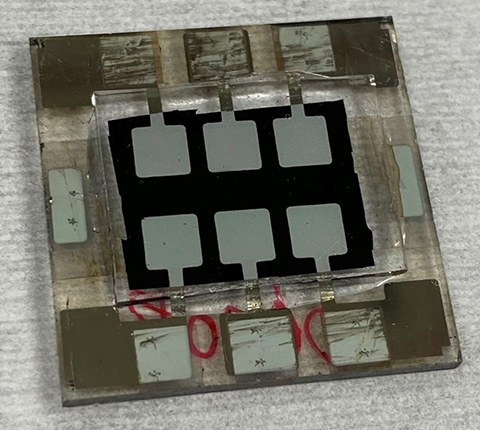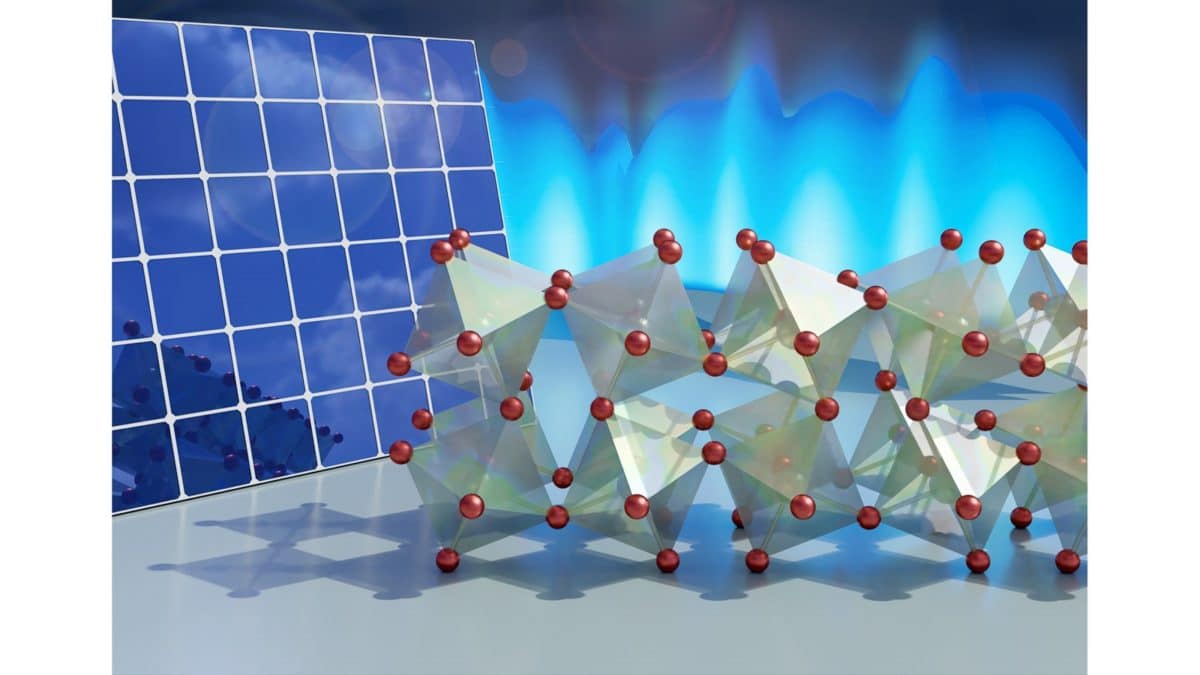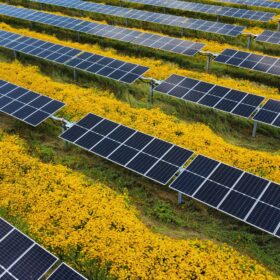Research scientists at the Department of Energy (DOE) National Renewable Energy Laboratory (NREL) published in the journal Nature Energy that they have achieved 25.5% efficiency in a new tandem perovskite solar cell that uses a tin-lead compound for improved stability. The US Department of Energy’s Solar Energy Technologies Office funded the research.
Perovskites are under focus by federally backed research teams as an abundant, highly efficient photovoltaic material, but they suffer from resilience and lifecycle limitations.
The new NREL tin-lead tandem cell retained 80% of its maximum efficiency after 1,500 hours of continuous operation. The stability was demonstrated in an accelerated aging test in a lab. It significantly outlasted other perovskites under the same test conditions.

“At this tandem efficiency level, the best reported stability in literature is normally several hundred hours,” said Kai Zhu, a senior scientist at NREL.
The new cell demonstrated a record in the voltage generated, at 2.1142 volts. In comparison, the best certified tandem device registered 2.048 volts.
As opposed to being classified by a specific material, like silicon or cadmium-telluride, perovskites are defined by their crystalline structures. The cells are made from a chemical solution affixed to a substrate. Tandem perovskites involve joining two layers with slightly different photovoltaic reactions to the solar spectrum. Tandem cells have shown efficiencies exceeding 30% in lab demonstrations.
The results build on a 2019 paper published in Science in which a team achieved 23.1% efficiency. In that study, the researchers discovered that deficiencies caused by tin could be addressed by adding the chemical compound guanidinium thiocyanate. The compound made marked improvements in the structural and optoelectronic properties of the cell.
The scientists also found success in adding phenethylammonium iodide to the tin layer of the cell. Combined with guanidinium thiocyanate, the two increased the carrier lifetime of the layer from 20 nanoseconds to 9 microseconds, an increase of 4,500%. Carrier lifetime is a key feature of the efficiency of a solar cell. The researchers found the compounds also reduced the defect density associated with tin oxidation at a level unprecedented for tin perovskites, and previously only achieved by lead-only perovskites.
Perovskite funding
This month, the DOE announced it selected 19 projects for a total funding of $6 million for solar energy research and development projects through its Small Innovative Projects in Solar (SIPS) 2022 Funding Program. Three projects were awarded $300,000 each for the development of perovskites.
The University of Hawaii received an award to test a new sealant material for the outer layer of perovskite cells that can be applied at low temperatures to avoid damage to the cell. The material could potentially replace glass in cells, reducing their overall cost, said the researchers.
The University of Arizona received funds to develop a device that detects defects or degradation of cells. The device would be optimized to perform in a high-throughput production line.
The University of Alabama also received $300,000 to advance high-speed printing of perovskite cells, overcoming challenges of instability and long processing times in manufacturing. The team said it aims to use a “slot-printing” method to make mini-modules with efficiencies exceeding 20%.
This content is protected by copyright and may not be reused. If you want to cooperate with us and would like to reuse some of our content, please contact: editors@pv-magazine.com.









By submitting this form you agree to pv magazine using your data for the purposes of publishing your comment.
Your personal data will only be disclosed or otherwise transmitted to third parties for the purposes of spam filtering or if this is necessary for technical maintenance of the website. Any other transfer to third parties will not take place unless this is justified on the basis of applicable data protection regulations or if pv magazine is legally obliged to do so.
You may revoke this consent at any time with effect for the future, in which case your personal data will be deleted immediately. Otherwise, your data will be deleted if pv magazine has processed your request or the purpose of data storage is fulfilled.
Further information on data privacy can be found in our Data Protection Policy.